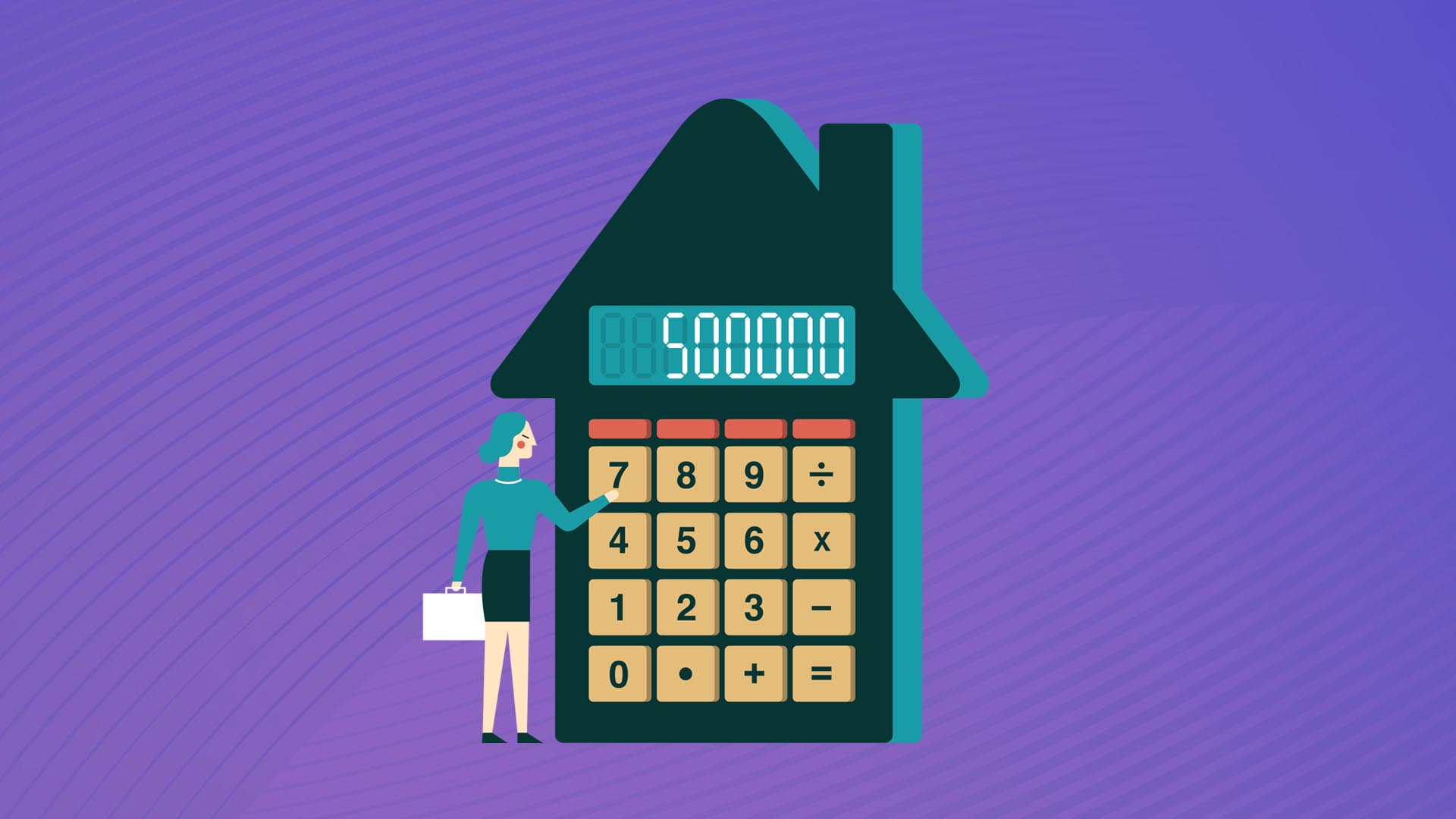The Ultimate Guide to Real Estate Taxes

Updated Jan 2023
Investing in real estate requires many costs beyond the actual purchase price of the property. Real estate investors, home buyers, and those renting out property pay many different fees and taxes that vary greatly depending on location. There are important taxes to consider before making any real estate investment.
4 Real Estate Taxes You Need to Factor into Your Investments
- Capital Gains Tax
- County Property Taxes
- Transfer Tax
- Net Investment Income Tax
Real estate taxes or property taxes are annual taxes applied to the value of a property as assessed by a local county or community assessor. Different counties within a state may have wildly different tax rates depending on a variety of factors. The state may also levy a property tax in addition to the county and other local agencies where the property is located. These taxes go to fund schools and libraries as well as county upkeep and improvements. The assessed value includes the price of the land as well as improvements such as buildings or swimming pools.
An important concept to understand is how to calculate cost basis. You can arrive at the cost basis for taxes by taking the original purchase price and adding any qualified improvements. You may also reduce your basis in some cases — if you claimed depreciation deductions, for example. Qualified improvements can add value, prolong property life, and give a new or different use (such as with a swimming pool). The costs of routine maintenance and minor repairs are not qualified improvements.
Inherited property receives a tax-free step-up in basis to the fair market value and is a useful way to pass savings on to heirs as part of an estate plan. Real estate property that is converted from personal to business use or vice versa may face special tax considerations. Speak with a qualified tax professional to ensure your personal tax situation receives the required attention and care to prevent any unwanted tax bills. The value of all property within a specified area is taxed in order to produce revenue for local and state governments. Generally, states have local tax authorities assess the property in their jurisdiction and determine their values as well as the property tax rates to apply to real estate. Different states have vastly different rules when it comes to property taxes.
Tax Reform
Recent changes to the federal tax code from the Tax Cuts and Jobs Act, commonly called the Trump Tax Reform, have introduced and retained favorable strategies for real estate investors. This reform includes lower tax rates and deductions for pass-through businesses. Many real estate firms, real estate investment trusts (REITs), and real estate investors typically benefit from these changes. Section 1031 (like-kind exchanges) was retained for real-estate, and bonus depreciation is allowed for some assets. However, some negative changes emerged as well. State and local tax (SALT) deductions are now limited to $10,000, and mortgage interest deductions were lowered. The increase in the standard deduction mixed with the decrease of some itemized deduction may decrease the value of home ownership in some locations. The estate tax exemption has also been increased to over $11 million. Many taxpayers will now be able to avoid the estate tax when passing assets on to family members.
The costs of purchasing real estate extend beyond the price of the property. Before you invest in real estate, it’s important to understand the different types of real estate taxes that must be paid.
1. Capital Gains Tax
When you sell anything and make a profit, you will likely be taxed on that income — usually when you file a tax return. For real estate and other investments, the length of time you’ve held them is a major factor when it comes to calculating taxes. If you sell an investment for a profit, you have a capital gain, but if you sell at a loss, it is a capital loss. Long-term investments are generally treated more favorably, with lower tax rates ranging from 0% to 15% and 20%, depending on income levels. Short-term capital gains are taxed as ordinary income with a federal tax ranging from 10% to 37% (based on income). If you net a capital loss, you may be able to offset some of those losses against other income.
When it comes to the sale of a property, how the property was used will impact your taxation on the sale. If the property was used for business, you will have to pay taxes on the depreciation which you may have claimed through the time you owned it. Selling a primary residence that was owned and lived in for at least 2 of the past 5 years may qualify you for exclusion on profit up to $250,000 if single or $500,000 if married and filing jointly. Any profit over the exemption will be taxed at the appropriate capital gains rate.
Another popular method of deferring tax on a property is to use a Section 1031 exchange. With this method, the profit from the sale of an investment, such as real estate, is invested in a similar property. For example, consider a home that cost $100,000 but is later sold for $150,000. If the property doesn’t qualify for the primary residence exclusion, the sale would accrue capital gains tax of $50,000. If the seller invests the money in a new property worth $150,000 or more within the applicable time frame, they can defer paying taxes on the capital gain until that property is sold. If you time this strategy with a retirement and an estate plan, you can reap further benefits.
When you sell a property, the closing agent may send a Form 1099-S (Proceeds from Real Estate Transactions) which details if you owe taxes due to capital gains that need to be reported. How capital gains are taxed at the state level is another matter. For example, in California, there is no special treatment for long-term capital gains, while Texas boasts no income tax.
2. County Property Taxes
County taxes are property or real estate taxes which are determined by local tax assessors where the property is located. A tax assessor from the assessor’s office will gather information from local, city, and county agencies — as well as registrars and county clerks — to determine property value. Generally, an auditor will determine the appropriate property and real estate tax rate and will also allocate raised money to county agencies, cities, schools, and special districts. The treasury will usually send property owners their real estate tax bills by October each year. Due dates for property taxes vary by state. For example, in Texas, property taxes are usually due by January 31st. California, on the other hand, wants an initial installment by November 1st and the second installment by February 1st. The first installment isn’t late until December 10th, and the second installment is late April 10th.
Local tax authorities have the ability to set the property taxes in their jurisdictions. This leads to many different property taxes applying to any given property depending on its specific location. A property appraiser will assess a property and determine the appropriate property tax. You can also challenge the property value if you deem it to be incorrect (reach out to your county assessor for more information).
It can be a complicated process to determine the exact amount of tax you can expect to owe on a property. These tax rates change every year. Some property tax rates are even advertised in local newspapers. Texas, for example, publishes this information each October. You can also reach out to your state tax agency, local real estate agents, or a knowledgeable tax attorney for more information about the property tax for a given piece of real estate.
You can pay your real estate tax through a variety of methods depending on your local policies. Your county treasurer may accept a debit card, money order, or check, and you may be able to pay by phone for a convenience fee. You can also mail payments to your county treasurer’s physical address. Personal property tax and real estate tax can result in hefty fines and penalties if delinquent. Some counties allow installment payments or other tax relief within a given tax year.
California
California has 58 counties and a very interesting property tax situation. The state passed Proposition 13 which limits the property tax rate to a 1% general levy of assessed property value. Then, additional property tax is added for voter-approved debt repayments, as well as special district assessments. Special districts, for example, include local schools and other services.
A benefit of California’s Proposition 13 is the limited increase of assessed value on a property by 2% annually. This helps keep the value of the property — and subsequent tax bill — in pace with the average expected growth of income. When selling or buying real property, it is possible to receive a supplemental property tax bill. The county or other local assessor or auditor compares the previous taxable value of a parcel number to the new value based on the property purchase price. It is normal to see a tax agency reassess property value and subsequent taxes after events such as a sale or transfer of property.
An interesting point about California property values and taxes is that state laws limit how fast a property value or house appraisal can increase. Because of this, you may find wildly different amounts paid as property tax between owners in the same neighborhood. That is because the tax assessed against one owner may be based on a purchase price over 10 years ago at $75,000 compared to a next-door neighbor who recently bought a house near the fair market value of $200,000. These owners would see a large difference in property tax $750 versus $2,000 due to the general tax levy of 1% alone.

Los Angeles County
LA County is the largest county in California, boasting a population of over 10 million in 88 cities. A real estate investor can expect to pay the 1% general tax levy on any property in California, at the very least. The rest of the county tax is comprised of voter indebtedness of the specific location where the property resides, along with any special district property tax. For example, voter indebtedness and special district property tax can be levied by the City of Santa Monica at a rate of .003904 per $100 dollars. The Metropolitan Water District might add an additional .003500. A school district like Unified Schools, or community college, add another .058862 and .070057, respectively. This comes to a combined LA County property tax of 1.136323 — which, on a property with a net taxable value of $263,651, would mean $2995.93 in property taxes. This estimated amount does not include direct assessments made against the property, which could easily add another $700 to $800 to annual tax bills.
Other California Counties
San Diego County is the second largest county in California, with a population of over 3 million in 18 total cities. San Diego Property Tax can change yearly due to a variety of factors, such as changing tax laws at the state, county, city, and local levels. Orange County has a population of over 3 million in 34 total cities. Special districts can include services such as fire protection, cemeteries, hospitals, parks, and sanitation. Orange County property tax revenue funds schools and county services.
The next largest counties by size are Riverside County with 28 cities, San Bernardino County with 24 cities, Santa Clara County with 15 cities, Alameda County with 14 cities, Sacramento County with 7 cities, Contra Costa County with 19 cities, and Fresno County with 15 cities. The actual property tax rate you will see depends on where you are located in each county, the voter-approved indebtedness in that area, and if the property is in a special district. Besides the property tax due annually, a buyer and seller will also have to account for property tax after the sale of a residence. For the buyer who takes out a mortgage to buy real estate, the property taxes are usually accounted for in the monthly payments. However, it doesn’t hurt to verify that all of these taxes are being considered. It’s a good idea to obtain the services of a tax professional or tax attorney to ensure you are making the best financial decision possible.
The seller is usually responsible for the property taxes up until the date of transfer, at which point the buyer is responsible for the remaining years of property tax. The local customs and procedures for who is responsible for which payments are usually negotiable but can change from county to county. Annual property tax bills are usually sent out around October and are due in installments. The first window for an installment payment ranges from November to December. The second window starts in February and ends in April. Late fees and penalties vary depending on the county. You could face heavy fines and penalties for underpayment and late payments. If you can’t pay right away, it is best to contact a local county clerk or even a registered tax professional to find out what options are available to you. You may be able to set up an installment plan to avoid a tax lien. Other tax relief options may be available for delinquent tax debt.
Texas
Texas has 254 counties, the largest of any U.S. state. There is also no income tax for most taxpayers, nor is there a state property tax like California’s 1% general levy. Businesses do face a business tax or franchise tax, which is generally under 1% for most businesses. There is a no-tax-due threshold of $1,080,000 annual revenue, but employment taxes are still due. Typically, counties assign up to 1.5% property tax, cities assign up to 2%, transit authorities can impose another 1.5%, and special purpose districts may charge up to 2%. School districts also add to the property tax assessment.
Actual property tax depends on the combination of charges from the various sources impacting the property in question. Average effective property tax rates in Texas might range from 1.8% to 2.4%. Property taxes are assessed, collected, and used locally by more than 4,000 local governments. The property tax process starts in January when the property is appraised, and notices of appraised value are sent out by May so property owners have time to protest or appeal the appraisal. Local tax rates are adopted by September and announced in October when tax bills are sent to property owners. Payments are due by January 31st and are considered late by February.
Harris County Property Taxes
Harris County is the largest county in Texas with 34 cities and 4.6 million residents. This county also has over 70 taxing entities which may contribute to the property tax for a given piece of real estate. Any given property is appraised for value and then local taxing units will decide what property tax rates to set to reach projected budgets. Many of those local governments partner with the county’s tax assessor and collector. The assessed value of a property is generally the market value of the property on January 1st.
Dallas County Property Taxes
The next biggest county in Texas is Dallas County, with a population of over 2.5 million and 31 cities. This includes 10 special districts. The average property tax rate in Dallas County can range from 2.17% to 2.72%, depending on local tax factors. For example, the Dallas Independent School District might impose a property tax at a rate of 1.282%, while the Carrollton-Farmers Branch School District might have a rate of 1.381% contributing to real estate taxes in this county.
Other Texas Counties
Tarrant County is the third largest county in Texas, with over 2 million residents spanning 34 cities. The average property tax rate ranges from 2.321% to 2.37%. Bexar County is next, with 25 cities and a slightly lower property tax rate. Travis County has 15 cities and property tax rates ranging from 1.97% to 1.98%. As with all the information provided here, tax rates are determined by the individual tax units that comprise a county and assessed on a property’s value, which is determined annually. At the time of a home purchase, the buyer and seller can negotiate payments in their contracts, but local custom usually dictates the payment responsibilities. The appraised value of owner-occupied homes or homesteads cannot increase more than 10% yearly unless substantial improvements occur that increase the value.
The concept of depreciation raises an interesting point when selling commercial real estate or property used for rental purposes. When you sell a property that was eligible for depreciation deductions, you may be subject to recapture rules — even if you didn’t claim the deductions! That recapture amount is treated as ordinary income rather than a long-term capital gain. Taxation involving commercial or rental property can become even more complex because of this depreciation and subsequent recapture.
3. Transfer Tax
A transfer tax, such as the California Documentary Transfer Tax, is based on property value and charged when property ownership changes. There are exemptions to the transfer tax in California, such as transfers due to death, gift, divorce, separation, foreclosure, or changes in holding method, to name a few. Otherwise, counties can impose a transfer tax rate up to $0.55 per $500 of property or $1.10 per $1,000 of property. In addition to county transfer tax, cities can also impose documentary transfer taxes which can become quite expensive. Be sure to check with a real estate agent or tax attorney to project your transfer and other taxes. Some counties, such as San Francisco County, do not charge a transfer tax. There is no residential real estate transfer tax in Texas. This helps to lower the impact of higher property taxes and real estate that is rapidly growing in value and cost. Along with no income tax, the lack of transfer tax means the major tax considerations are county or property taxes.

4. Net Investment Income Tax
The net investment income tax (NIIT) applies to rental income and capital gains from the sale of rental properties. This tax applies a 3.8% rate to certain investment income, such as rental income and capital gains from a passive investment for a taxpayer. An example might be rental properties that are not actively managed by an owner who is a real estate agent. Gains from the sale of investment real estate, such as a second home, would also qualify. The net investment income tax applies to those with an income over $200,000 for single filers and $250,000 for married joint filers.
Deductions, Exemptions, and Credits
There are many deductions, exemptions, and credits that homeowners and real estate agents may be eligible to claim. The homeowner exclusion on the first $250,000 to $500,000 of profit from the sale of a primary residence is only available under certain conditions. It would be best to consult with a tax lawyer for the most up-to-date and relevant tax information for your unique tax situation.
You can deduct real estate taxes, although under Trump’s new tax reform, state and local tax deductions are limited to $10,000. Home mortgage interest deduction amounts were lowered as well, but Section 1031 like-kind exchanges were retained for real estate transactions. Taxpayers have a higher standard deduction as well. This makes it less likely for many taxpayers to itemize, which reduces the value of home ownership when it comes to taxation. The mortgage interest deduction now only applies to up to $750,000 in debt. Home equity loan interest can only be deducted if used for qualifying improvements.
Rental properties may be eligible for the new 20% deduction for qualified business income subject to specific limits. There are many other rental property tax deductions as well. In Texas, a homestead exemption for primary occupied residences allows for the exclusion of up to $25,000 from property value for tax purposes. However, this only applies to property in school tax districts. Some people may be eligible for an exemption based on the owner’s age, being a surviving spouse, and many other reasons.
Real Estate Taxes
Taxes can be complicated and confusing, especially when considering real estate transactions. There are many different factors involved and taxes to consider. If you are selling real estate, you may want to consider how long you’ve held the property. Long-term capital gains tax rates are more advantageous. Selling a primary home that meets eligibility requirements allows a homeowner to exclude $250,000 to $500,000 of profit. Amounts above this exemption, or if the sale doesn’t qualify for the exemption, are subject to capital gains rates.
Property taxes or county taxes are the next biggest real estate tax to consider. These are local taxes set by taxing units and local governments to pay for improvements, fire and police services, and schools. Because property taxes are set at the local level, they vary between counties and states. A local assessor will conduct a real estate assessment to determine property value, usually based on fair market value. In California, the appraised value cannot be raised more than 2% annually. Texas allows up to a 10% increase in value each fiscal year. Because of these factors, property taxes can vary greatly. Generally, property taxes are assessed and sent out by October each year, although due dates vary by state. You can contact your county tax collector office or log in to your local tax portal to see property tax records or to conduct a property tax lookup.
Beyond property and capital gains taxes, a real estate investor may also have to pay a transfer tax. Currently, Texas has no transfer tax or income tax, either. California does have transfer taxes which can get pretty high in cities, although some counties, such as San Francisco, do not have a county transfer tax.
Capital gains from the sale of a rental property may be subject to an additional tax known as the net investment income tax (NIIT). This tax applies an additional 3.8% to the property value. A property owner is responsible for paying applicable taxes when they are due, even if they don’t receive a notice. Delinquent real estate taxes and other tax bills for personal property and real property can result in a tax lien. If you need financial assistance, consider an installment plan, and reach out to the tax collector’s office to see what options are available. Considering some of the fees and penalties that may arise, it might be better to pay taxes with a credit card.
Managing many different properties and keeping track of relevant tax information for each location can be quite complex and time-consuming. This is why it is such a good idea to hire an expert to manage your financial concerns — including planning for taxation and other tax preparation strategies. Tax laws can change often and the real estate tax implications for any piece of property will change year to year. Before investing in real estate, contact the trusted tax attorneys at Anderson Advisors for assistance.
Bonus Video
3 Steps to Create an Invisible Investor Strategy
The greatest mistake that people make when it comes to asset protection for real estate is not understanding the risks that are waiting out there for them. This eBook reveals the structure you should follow to ensure your hard earned money is protected from frivolous lawsuits and costly tax mistakes.



